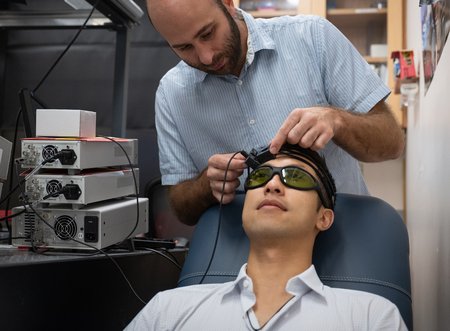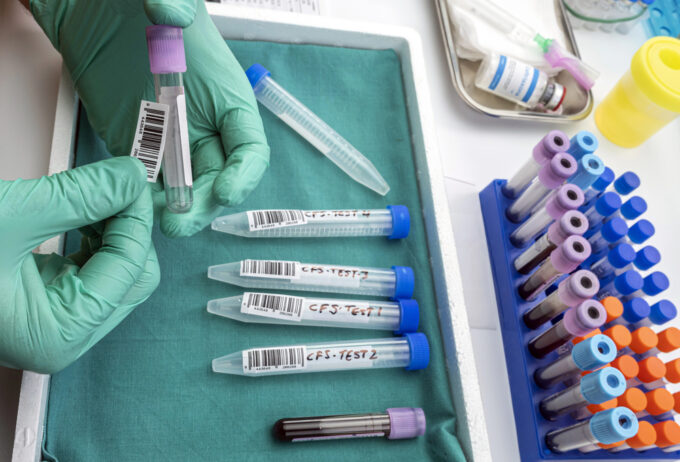Headband determines the risk of stroke
US scientists are specifically using infrared light to detect impending dangers in the brain.

Researchers at the California Institute of Technology (Caltech) and the University of Southern California School of Medicine have developed a type of headband that will determine the risk of a stroke in the future. The device does this non-invasively and evaluates changes in blood flow and volume in the brain while the participant holds their breath. It has already shown promising results in differentiating between people at low and high risk of stroke.
Revolution in prophylaxis
"With this device, for the first time we are able to use a physiological measurement to determine whether or not the risk of someone suffering a stroke in the future is significant. We believe this can truly revolutionize the way stroke risk is assessed and will help physicians determine whether a patient's risk is stable or worsening," says Simon Mahler, a postdoctoral researcher in the lab of Caltech professor Changhuei Yang.
The headband sends infrared laser light through the skull into the brain. The blood flowing in the veins scatters the light and partially reflects it back so that it can be captured by cameras positioned on the outside. This speckle contrast spectroscopy (SCOS) is used to measure the decrease in light intensity from the point where the light enters the skull to the point where the reflected light is collected to determine blood volume in the blood vessels of the brain.
It also examines how the light is scattered and creates spots in the camera's field of view. These spots fluctuate in the images depending on the blood flow rate in the blood vessels. The faster the blood flows, the faster the spot field changes. The researchers can use these measurements to calculate the ratio of blood flow to blood volume flowing through the vessel to get an idea of the patient's risk of stroke.
Four-minute measurement is enough
The team has so far tested the device on 50 test subjects. Based on the stroke risk questionnaire they completed, they were divided into two groups: one with a low risk and one with a high risk. The researchers then measured the blood flow in each volunteer for three minutes and quantified the flow rate and volume of blood reaching the brain. After one minute, they asked the participants to hold their breath.
Holding your breath puts a strain on the brain as it begins to realize that it is taking in too much CO2 and too little oxygen. It goes into panic mode and starts pumping oxygen from the rest of the body to itself. This greatly increases the blood flow to the brain. As soon as breathing resumes, oxygen levels return to baseline. This happens in both people at low and high risk of stroke.
However, the researchers found that there were differences between the groups in the way the blood moved through the vessels. The SCOS technique allows the researchers to measure how much the blood vessels expand while the subject holds their breath, and how much faster the blood then flows through the vessels. "These reactive measurements are an indicator of vascular stiffness. And that in turn is an indicator of stroke risk," says Yang.
Source:
caltech.edu
usc.edu









